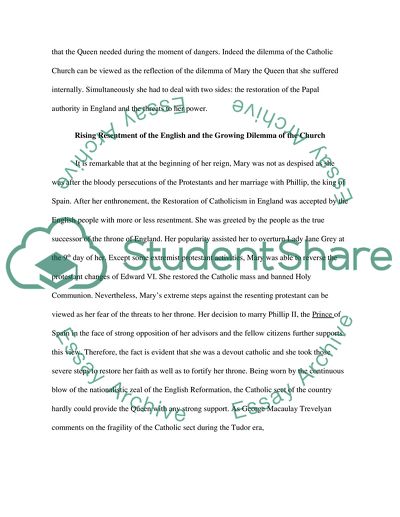Cite this document
(“Mary Tudor Impaled her Church on the Horns of an Impossible Dilemma: A Research Paper”, n.d.)
Mary Tudor Impaled her Church on the Horns of an Impossible Dilemma: A Research Paper. Retrieved from https://studentshare.org/history/1723425-mary-tudor-impaled-her-church-on-the-horns-of-an-impossible-dilemma-how-fair-is-this-comment
Mary Tudor Impaled her Church on the Horns of an Impossible Dilemma: A Research Paper. Retrieved from https://studentshare.org/history/1723425-mary-tudor-impaled-her-church-on-the-horns-of-an-impossible-dilemma-how-fair-is-this-comment
(Mary Tudor Impaled Her Church on the Horns of an Impossible Dilemma: A Research Paper)
Mary Tudor Impaled Her Church on the Horns of an Impossible Dilemma: A Research Paper. https://studentshare.org/history/1723425-mary-tudor-impaled-her-church-on-the-horns-of-an-impossible-dilemma-how-fair-is-this-comment.
Mary Tudor Impaled Her Church on the Horns of an Impossible Dilemma: A Research Paper. https://studentshare.org/history/1723425-mary-tudor-impaled-her-church-on-the-horns-of-an-impossible-dilemma-how-fair-is-this-comment.
“Mary Tudor Impaled Her Church on the Horns of an Impossible Dilemma: A Research Paper”, n.d. https://studentshare.org/history/1723425-mary-tudor-impaled-her-church-on-the-horns-of-an-impossible-dilemma-how-fair-is-this-comment.


